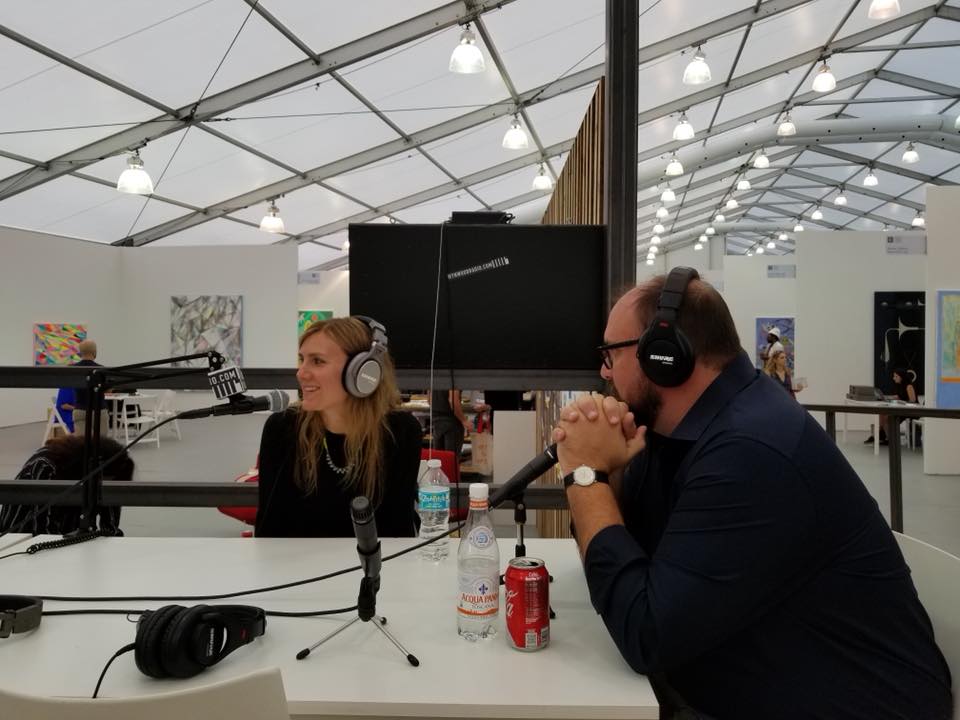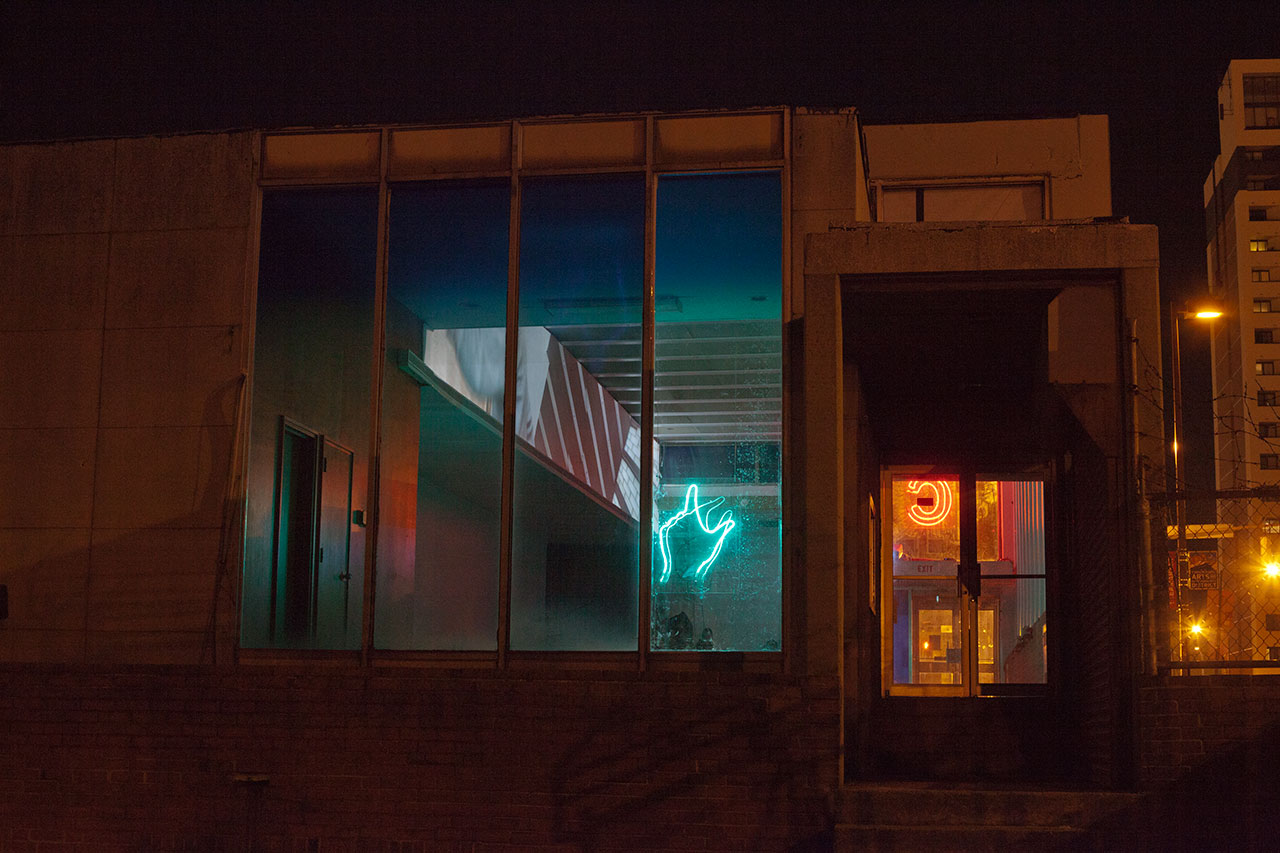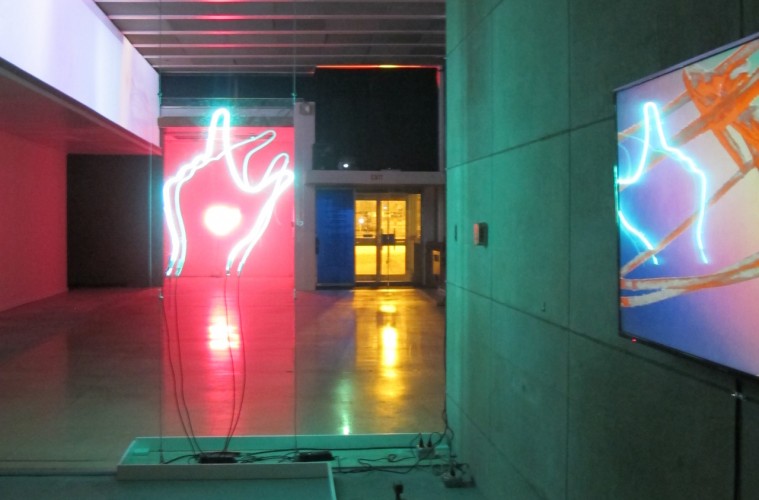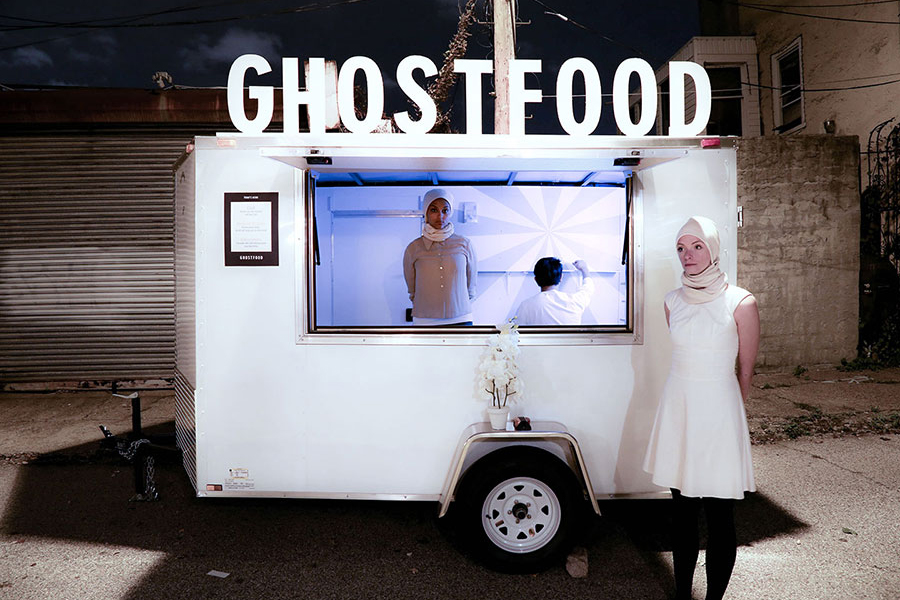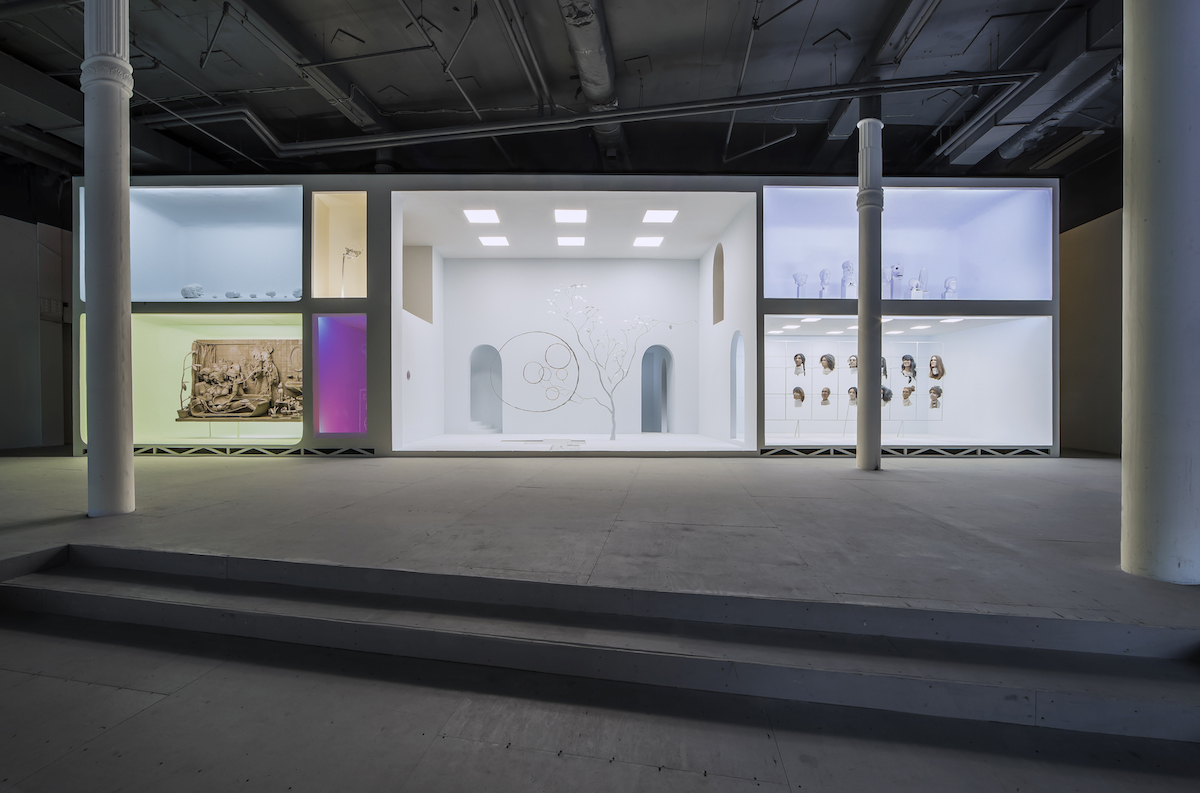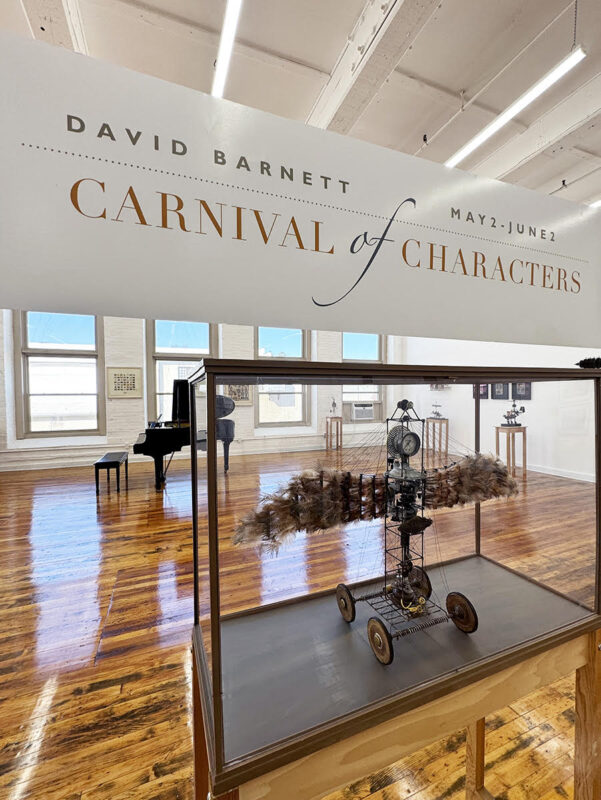When I first moved to Baltimore in 2000, Joyce J. Scott’s Kickin’ it with the Old Masters exhibit at the Baltimore Museum of Art was in full swing. It was hugely significant that Scott, a Baltimore native, had a giant solo show at our major art museum. What I didn’t realize at the time was that this exhibit was a partnership between the BMA and MICA’s Exhibitions Seminar run by George Ciscle, the founder of The Contemporary, originally a nomadic, non-collecting museum that partnered contemporary artists with larger institutions in radically ambitious exhibitions.


Fast forward a few years to Louise Bourgeois: Femme at The Walters in 2006. This was the first exhibit I sunk my teeth into as a critic writing for a national art publication. It was the first time I intellectually engaged with the work in The Walters as conceptual art, rather than artifacts. Femme completely changed my perception of ancient and historic works of art, placing it into a contemporary context of ideas and issues, essentially bringing it to life.
This unusual exhibit was an official partnership between The Contemporary Museum (TCM) and The Walters, featuring the artist’s works seamlessly threaded throughout the museum, made visible only by hot pink wall labels. The lasting cultural impact of these collaborative exhibits and so many others mounted by TCM from 1990- 2006 was massive; they were far-reaching yet locally relevant, and uniquely ambitious in a region that sorely needed it.
TCM’s transformation into a brick and mortar museum (the word museum was added to its title) brought about changes that made it less interesting to me. Under the direction of Thom Collins and later, Irene Hoffman, its programming was slick and esoteric. Although TCM offered the most intellectually challenging and nationally relevant arts programming in Baltimore, it also functioned like cultural broccoli (substitute whichever vegetable you least prefer) and my experience with it was ambivalent. TCM seemed focused on attracting an elite national audience at the expense of a local following, more a vehicle for a talented curator poised to ascend to the next professional level in some other city. Maybe we were too short-sighted to appreciate its brainy conceptualism? Or maybe TCM did not prioritize a local following.

Either way, I don’t remember reviewing many of TCM’s on-site shows during these years, but I did exhibit in one and attend several of their galas. These were elaborate parties and I thought they were cool but prohibitively expensive; I was invited as a token artist to make it “fun” and knew their goal was getting a handful of rich people to donate to the organization.
And then it wasn’t. TCM’s board decided to suspend its existence indefinitely in 2012 for financial reasons, and suddenly, the host for smart, bigger-than-Baltimore art was gone.
Until it wasn’t.
 The Contemporary’s team with Abigail DeVille at The Peale Museum
The Contemporary’s team with Abigail DeVille at The Peale Museum
Deana Haggag and a new board brought The Contemporary (TC) back to life in 2013, dropping the ‘museum’ from its title and taking it back to its roots as a radical, nomadic, non-collecting museum. True to Ciscle’s original vision, this new museum became a beacon of excellence in a town full of under-funded, half baked artist projects. A new, invigorated board hired Haggag, then 26 years old and a recent MICA MFA graduate in Curatorial Practice, as director after she had spent the past year researching the region’s cultural deficits and assets as her thesis. I’m not sure if any of us realized it would happen, but under her direction, the new entity grew to represent many of Baltimore’s best cultural aspects and our potential for national relevance in the art world.
The smartest thing Haggag did at the beginning of her tenure was to hire Ginevra Shay and Lu Zhang, two brilliant artists and organizers, as her team and later, Lee Heinemann, a talented artist and educator. Together, and with the help of an internationally respected advisory board and board president Terry Squyres, the team built a multi-faceted landscape of original programming and exhibitions that Baltimore lacked.
 Coco Fusco speaking at the Baltimore School for the Arts
Coco Fusco speaking at the Baltimore School for the Arts
In the Co-Hosts speaker series, TC partnered with local artist-run exhibition spaces and each got to choose an internationally known speaker, who gave a free public lecture and a few studio visits. Not only did Co-Hosts transport notable artists and thinkers to Baltimore, like Nick Cave, Coco Fusco, The Guerrilla Girls, and Shinique Smith, it gave underfunded, struggling artist-run spaces a visibility and voice in a national art conversation. Its subsequent speaker series, Talking Shop, paired Baltimore artists with international thinkers and scholars on a range of issues including technology, politics, science, and medicine.
After the speaker series launched, there was intense pressure for TC to step up to the previous iteration’s exhibition schedule but instead, they opted for a limited number of exhibits, basically one a year, but made sure each project was exceptional according to its own design. The Warhol Foundation provided funding for their series of site-specific commissioned artworks by artists who were becoming internationally known, pairing them with historic locations in Baltimore.
Each exhibit, including Victoria Fu’s Bubble Over Green, Abigail DeVille’s Only When It’s Dark Enough Can You See The Stars, Mariam Simun’s GhostFood, and Michael Jones McKean’s The Ground, offered Baltimore audiences a chance to experience art that was beyond our typical scope: baffling, interactive, exquisitely designed, and immersive. These exhibitions also gave Baltimoreans a chance to dig deeper into our own cultural heritage through the use of specific historic buildings, some which needed significant renovations, and by partnering with local educational institutions like the Baltimore School for the Arts and Johns Hopkins.

TC also received funding from the Warhol Foundation to start a project-based granting program, The Grit Fund, specifically aimed at the cultural groups and projects that typically fall through the funding cracks because they don’t have nonprofit status, including the My Skate Night performance group, Hyrsteria art magazine, and a podcast series at BmoreArt focused on the contributions of senior artists.
As with it’s other programming and projects, The Grit Fund was awarded to a diverse group of recipients, a range of those you would expect with those you wouldn’t, for example, to LabBodies, a performance art collective, and to TT the Artist, a rapper and film producer.

And then there was the Artist Retreat. Baltimore artists were encouraged to apply for a free, three-day getaway, with meals and lodging provided, way out in the woods, where artists were able to come together with invited advisors from art institutions from across the country, for workshops, lectures, and presentations of creative work. Funded by the Robert W. Deutsch and Surdna foundations, the artist retreat was a life-changing event for those included. It functioned not only as an opportunity for a diverse group of artists from different, typically separate, artist cliques to get to know each other’s work, it laid strategic tracks for future collaboration, opportunities, and support. The retreat made Baltimore better, stronger, more professional, and imbued the arts community with pride and energy.
In all of TC’s programming, it was obvious that the organization prioritized diversity and authentic conversation in a city that desperately needed it, and took the time necessary to do copious research and build respectful relationships, rather than bulldozing an ego-driven agenda or leveraging art celebrity star power.

Once relaunched, TC worked hard to listen to its audience, often bending over backwards for individuals and organizations, and it paid off: subsequent speaker series and exhibitions were well attended, its annual intern publication was unique and excellent each year, and choices in artists for site-specific projects were on point and ahead of the curve. Even TC’s three guiding principles were smart, egalitarian, and provocative: “artists matter, collaboration is key, and audience is everywhere.”
The Contemporary consistently exceeded expectations, rallied Baltimore audiences, and was the only local institution to receive regular reviews in national art publications like ArtForum, Art in America, and Hyperallergic, putting Baltimore on a national cultural map.
For all these reasons, it’s even more of a loss that TC is, once again, effectively closed, with the official announcement from its last two employees, Ginevra Shay and Lee Heinemann, that their last days on the job were December 9, 2017.
“We went through a national search for an executive director this past fall and summer–but we did not yield an optimal candidate to lead the museum going forward,” says an official statement from TC’s current board. “The Board has decided to take some time to determine what the next steps will be for this ever-evolving institution. Right now, the Board is working strategically to create a plan for the future.”
Based on this statement, it’s unclear whether TC’s board is suspending the entity temporarily or permanently, but with no current employees and plans for the near future, we have to assume that the museum will cease to exist for a long time.
With TC gone, who will bring internationally relevant artists to Baltimore to interact and collaborate with local artists? Who will mount national caliber exhibitions in Baltimore’s historic buildings that confound and dazzle us? Who will host an issues-focused free speaker series without it doubling as an obvious sales pitch and branding opportunity for the institution? Who has the ability to collaborate respectfully with local artists and organizations, with funders and those who can meaningfully support the arts, to engage authentically and not just for Instagram photos?
I can’t help it, but I’m really sad about this. Baltimore is losing a rare cultural gem and we have nothing even close to replace it.
 Deana Haggag, Lu Zhang, and Ginevra Shay with CoHost Speaker Andrew W.K.
Deana Haggag, Lu Zhang, and Ginevra Shay with CoHost Speaker Andrew W.K.
If The Contemporary made any major mistake, it was this: they made their success look too easy, too inevitable, when in reality, its team members worked round the clock, carrying a stress level that far outweighed their salaries.
Looking back, I have to wonder: Was this a sustainable practice? Was it fair of us, members of the audience and art community, to expect uncompromising excellence from this institution when it cost us nothing? Should we have asked for less and given more or is this organization simply following a natural course of evolution? Should The Contemporary have asked more of us and given us a chance to respond?
Unlike most art institutions in Baltimore, in its most recent iteration TC never hosted a gala, or any kind of fancy party for rich people that excluded the artists they served. TC never asked artists to donate their work for fundraising auctions. TC rarely charged a fee for events, lectures, or applications. TC never compromised its values or its aesthetics in the ambitious exhibitions it presented, which featured mostly women of color, elevating their status in the art world.
As the face of the organization, Deana Haggag managed to balance a cult-of-personality status as a spokes-model for the arts on the covers of glossy publications with a confident and humble intelligence and a good leader’s ability to attribute her own success to the support and talent of her team. When it came time for Haggag to move on to the next level of her career, a difficult decision but the correct one for her, (she is now president and CEO of United States Artists, a national granting institution based in Chicago), it was a make-or-break moment for the organization. This was Baltimore’s opportunity to step up and claim this organization as a valued and essential entity, one that belonged to all of us, and, whether we were given a real opportunity to intervene or not, we have failed.
 Founder George Ciscle with Deana Haggag
Founder George Ciscle with Deana Haggag
In Baltimore, we tend to support the underdog wholeheartedly, but we have a complex psychology when it comes to success. Is the demise of The Contemporary a mere symptom of the arts culture here, where small initiatives are celebrated but larger ones, especially those who do such good work that it appears they have all the resources they need, are taken for granted? Or is this simply a natural course of events, where a group of talented individuals came together for a short time and focused their efforts upon a local art community with an ambitious, uncompromising, and radically vivid agenda?
I would like to say that I did not take The Contemporary for granted, that I did everything I could do to support it and keep it afloat, but the truth is I didn’t. Sure, I attended their events and wrote about their projects, critically at times, but I know I personally benefitted more from its efforts than it did from mine. All good things must come to an end, but Baltimore is a city rife with premature losses and unnecessary expirations and this makes it even more painful.
Today I mourn for a nomadic, non-collecting museum that made me a better artist, a better writer, and a better human. I mourn for a city that desperately needs brilliant cultural escapades that elevate our conversation about art, equity, beauty, and inspiration.
Thank you Deana, Lu, Ginevra, Lee, Terry, Dominiece, Erica, amazing interns, advisory and board members, and all those who made us realize how excellent and special Baltimore’s artists are, how creatively powerful this city is, and how an insistence upon quality and authenticity makes all the difference. You will be sorely missed.
Author Cara Ober is Founding Editor at BmoreArt.

